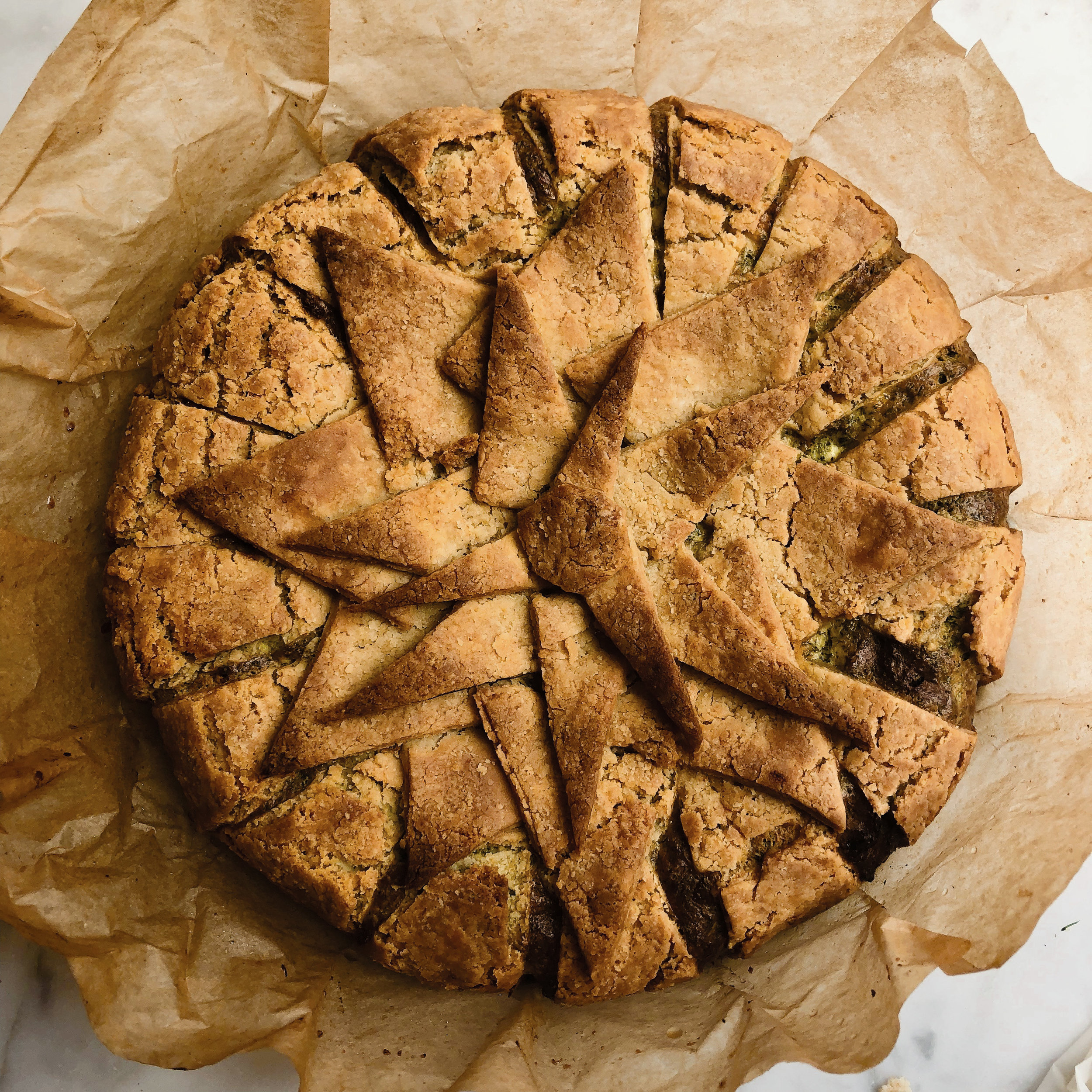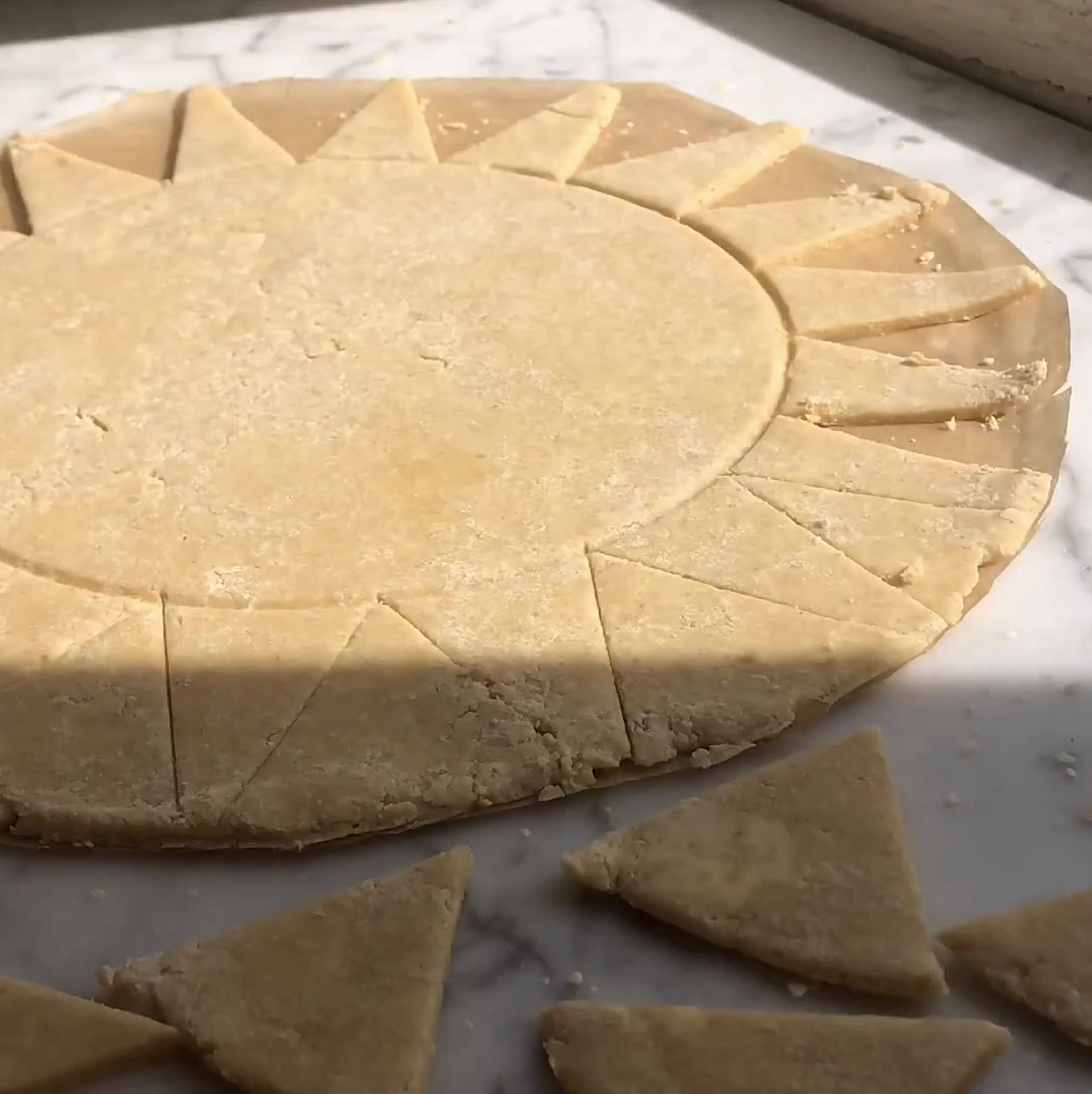In 1417, the papacy came full circle back to Rome ending an extended stint in Avignon. In that same year, Johannes of Bockenheim assumed his office as the cook to the papal court, though not for the pope himself. Rome was in an upsurge of cultural activity, moving steadily toward the Roman Renaissance.
Bockenheim’s position as cocus communis afforded him the possibility to observe visitors from many nations and walks of life and to make note of their culinary proclivities. His work Registrum Coquinum, written in 1431 by the self-described “cocus quondam Martini,” or former chef to Martin V, is a brief but fascinating socioculinary account of his observations on 15th century society. Each recipe, or, more accurately, recipe sketch, is accompanied by an annotation stating to whom the dish would be most suited. The primary purpose of his text was to pass on the fruits of his privileged knowledge to other chefs cooking in a cosmopolitan context.
Herbulatum, for example, is a delicious pie of cheese and herbs that was designated to “courtiers and the wives of same,” a term that by the 15th century had evolved to indicate men of learning who were retainers in a noble retinue. It is a dish of simple elegance, spritely in taste, comforting without being decadent, healthy but not “healthy.” It is tasty at any temperature, making it perfect as a sideboard starter, the opening course that would come to be called the antipasto. Herbulatum can be kept in the refrigerator for three or four days and makes a satisfying snack anytime you want sneak something good without the guilty aftertaste.
The herb quantities listed in the standardized version result in a harmoniously balanced torte, but feel free to experiment with the quantities in accordance with taste and availability. Bockenheim’s version in itself was only one of many similar herb pies from the period.
42 - Sic fac herbulatum. Recipe herbas bonas et sanas, ut sunt petrocilinum, maioruanum, rutam, mentum, aut salviam, et similia, et pista illa in mortorio. Post hoc recipe ova cruda, et caseum friscum, et mistica illa cum uva passa: post hoc recipe sapharanum, jinciberum, cum aliis speciebus dulcibus, cum butiro recenti; et tunc fac pastam, et mitte eam in tegale, et mitte subtus et intus pinguedinem. Et quando est coctum mitte superius sucarum, e pineas sanas. Et erit optimum pro cortisanis et mulieribus eorundem.
Recipe
Herbulatum
20g parsley
15g fennel fronds
1 tbsp fresh marjoram
10g fresh mint
5 leaves fresh sage
1 slice peeled, finely chopped ginger
¼ tsp cloves
1/4 tsp celery seed
Pinch saffron
1/4 tsp ground nutmeg
350g ricotta
25g raisins
2 eggs
½ tsp salt
Timballo pastry shell (below)
Sugar and toasted pine nuts to garnish
Directions
Prepare a timballo crust. See below.
Preheat oven to 180°.
Put prepared crust into a 26cm spring form pan as shown in the video.
Process the first six ingredients, the herbs, until finely minced. Mix together with the remaining ingredients, fill the crust with the mixture, and create a semi-closed top crust to the pie as shown in the video.
Bake for half an hour then tent loosely with foil. Cook another 20 minutes. Remove the outer part of the spring form pan and the foil and continue to bake for 10 more minutes taking care that it browns properly. Remove and sprinkle with a teaspoon of sugar and pine nuts that have been toasted in butter.
Timballo Crust
200g/ 1 1/2 cups all-purpose flour, preferably cold
50g/ 1/2 cup whole wheat flour
2 tbsp heavy cream or full fat Greek yogurt
1 egg yolk with 2tbsp water
4 tbsp cold butter
4 tbsp cold lard (or more butter)
½ tsp salt
1 tsp sugar
Directions
Mix the liquid ingredients together and set aside.
In a food processor, add the flours and dot with chopped butter and lard pieces. Pulse about 10 times until the lard and butter are smaller than peas. With the machine running, pour into the feed tube until the dough starts to form into a ball.
Remove the dough, form into a disk and refrigerate for at least one hour.
For this recipe there is no need to pre-bake the shell.
Roll out as shown in the video.




